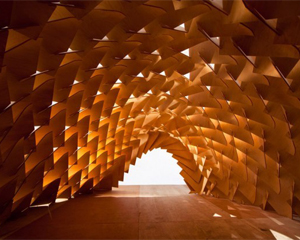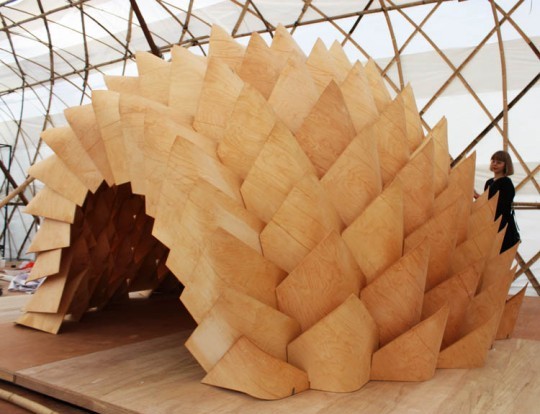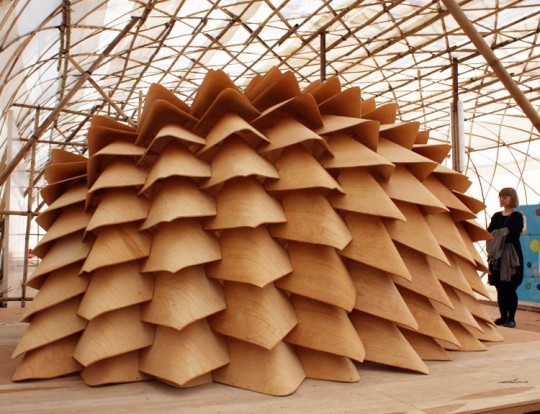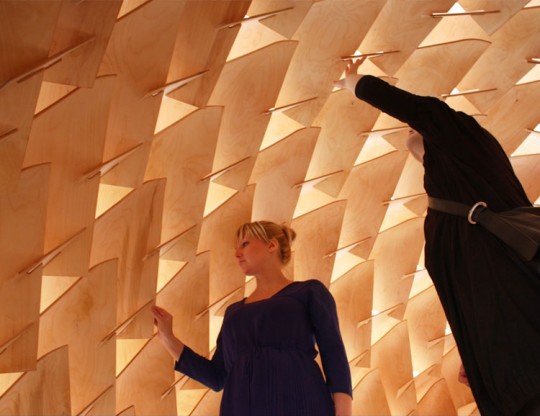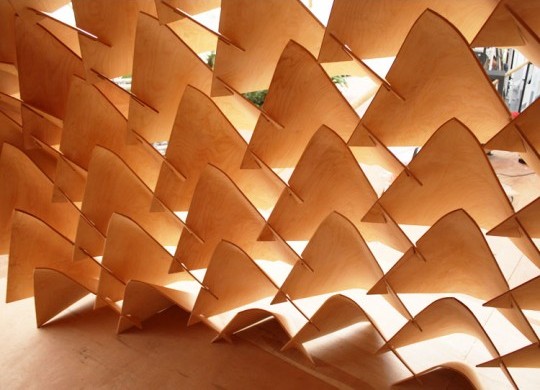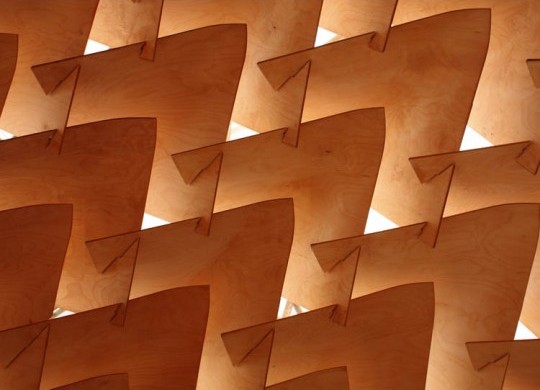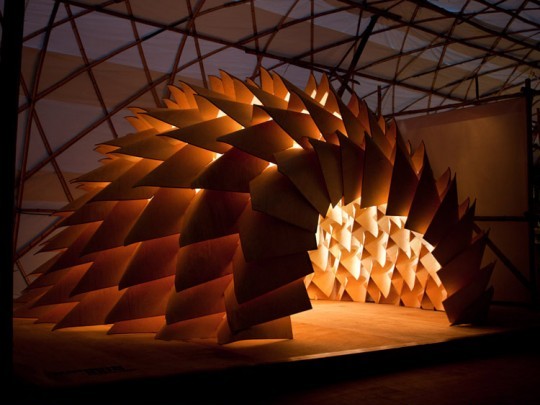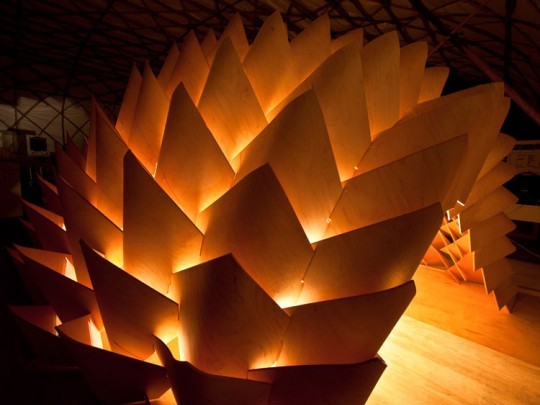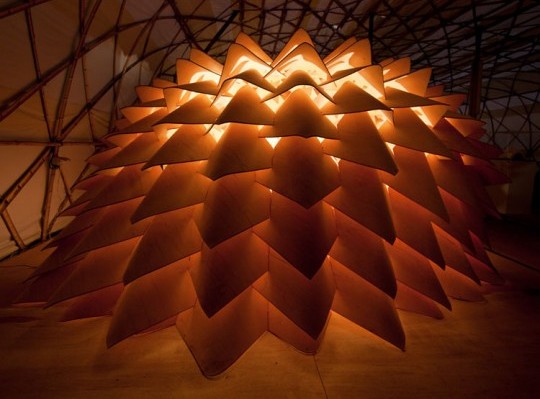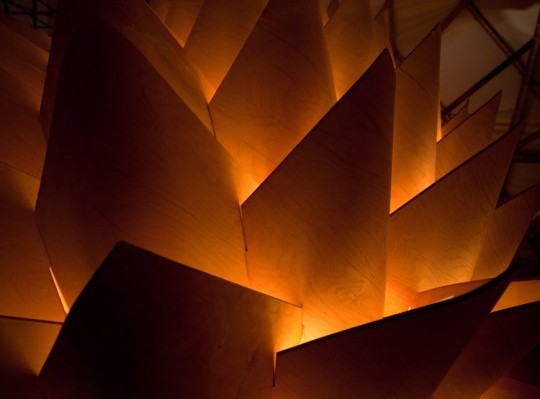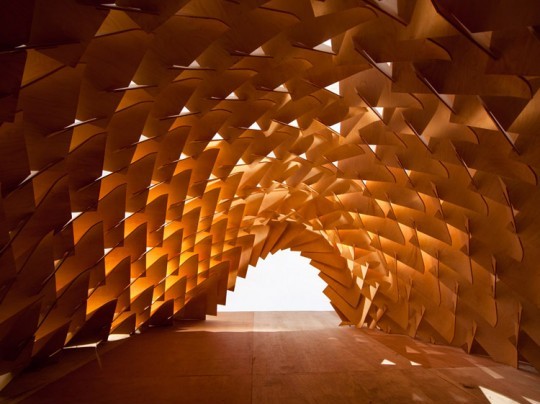The Dragon Skin Pavilion is an architectural installation designed and built for the 2011-12 Hong Kong & Shenzhen Bi-City Biennale of Urbanism\Architecture.
The Pavilion utilises a newly developed environmentally friendly material called “post-formable” plywood, which incorporates layers of adhesive film to allow easy single-curved bending without the need for steam or extreme heat. With no material loss, a CNC mill divided 21 of these 8×4 plywood sheets into eight identical squares, and accurately cut the unique connection slots that were programmed into the pavilion geometry by computer.
Using one single mould, all panels were bent into the same shape, and within six hours the numbered shells were slotted into place without using any plan drawings, glue or screws. The underlying equilibrium surface geometry removed all internal forces and deformations from the pavilion, which became a self-supporting, free-standing, light-weight skin with highly tactile tectonic properties and unique lighting effects.
The structure challenges and explores the spatial, tactile, and material possibilities that architecture can offer by revolutions in digital fabrication and manufacturing technology. The Dragon Skin Pavilion redefines the role of architectural design in construction by actively working with the material’s basic properties and pushing its structural performance, while being aware of the aesthetic values and effects the system provides.
The pavilion is the product of collaboration between the Laboratory for Explorative Architecture & Design (LEAD) and EDGE Laboratory for Architectural and Urban Research (Tampere University of Technology, Finland). It was designed by Kristof Crolla (LEAD), Sebastien Delagrange (LEAD), Emmi Keskisarja (EDGE), and Pekka Tynkkynen (EDGE) and builds upon expertise from a first prototype constructed during an architectural design workshop “Material Design & Digital Fabrication” at the Tampere University of Technology.
Architects: Emmi Keskisarja and Pekka Tynkkynen (EDGE), Kristof Crolla and Sebastien Delagrange (LEAD)
Location: Kowloon Park, Hong Kong
Collaborators: Gilles Retsin, EDGE Laboratory for Architectural and Urban Research, Tampere University of Technology, UPM Kymmene
Built Area: 16 sqm
Project Year: 2012
Photographs: Pekka Tynkkynen, Dennis Lo Designs
